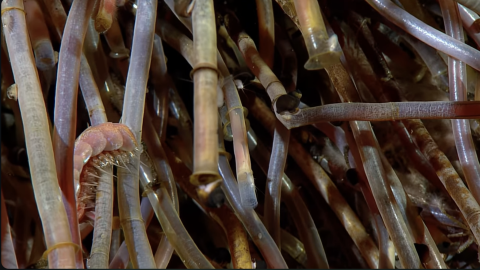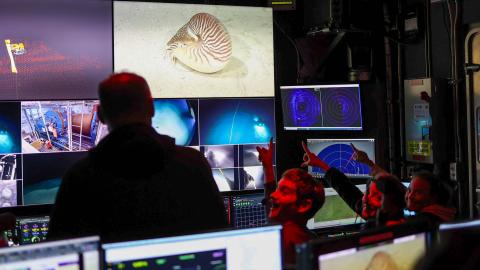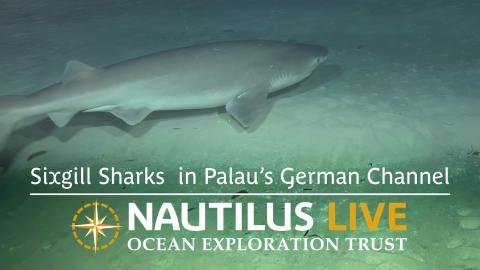A Marine Biologist Explains: What exactly is oceanography?
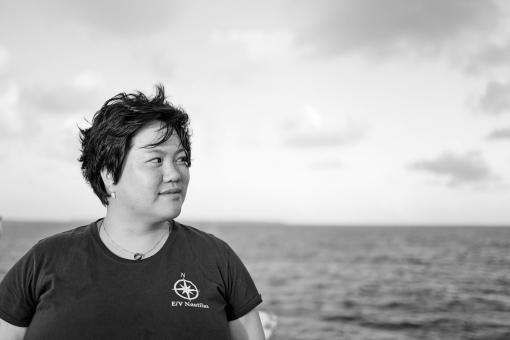
This blog was written by Science Communication Fellow Alice Chou.
Disclaimer: My background is in sensory biology– I am driven to understand how organisms perceive their environments, with a particular interest in crustacean nervous systems and senses. Despite being a marine biologist, the honest truth is that I have rarely considered the huge range of dynamics within the ocean beyond its interactions with light and sound.
However, sailing as the Science Communication Fellow during the NA169 expedition in Palau has broadened my understanding of ocean systems. Working alongside researchers from Ocean Exploration Trust, the Coral Reef Research Foundation in Palau, and the Scripps Institution of Oceanography, I have gained a deep appreciation for the ocean’s rhythms, volatility, and complexity.
Over the first week of the expedition, sheer embarrassment and mild seasickness kept me from asking a central question: What exactly is oceanography? Thankfully, a few of my shipmates were happy to give me an Oceanography 101 lesson after dinner one evening. Ray Young and Kaley Mudd, graduate students at Scripps’ Coastal Observing Research and Development Center, patiently explained a few central concepts with grace and humor.
As its name suggests, oceanography is the study of all things ocean and ocean-related. Divided into four interconnected branches (physical, chemical, biological, and geological), this field of science examines the past, measures the present, and models the future.
Fundamentally, the world’s ocean is a single continuous body of salt water. However, it is also a system of water masses shifting over space and time. I had no idea what a water mass was (my first thought was a puddle), but over some slightly stale cookies, I learned that a water mass is an identifiable body of water defined by distinctive physical properties, such as temperature, salinity, chemical traces, and origins. Critically, water masses differ in density due to their temperatures and salinities. It is important to note that the part of the ocean many of us are most familiar with—the surface water—is generally not considered a water mass in and of itself.
An example would be Antarctic Bottom Water. This is an exceptionally cold and salty water mass that originates along the coast of Antarctica as sea ice forms (leaving more salt in the surrounding water). That water then sinks along the Antarctic continental slope in the Southern Ocean. This water mass has a very different composition in comparison to water that originates in the Mediterranean.
As a system, these different water masses interact and are influenced by forces that can be boiled down to physics, chemistry, geology, and biology —the four major branches of oceanographic study.
The ocean has immense power over our lives. For example, the temperature, salinity, and distribution of different water masses influence the Earth’s climate system. The ocean absorbs enormous amounts of sunlight, especially in tropical regions around the equator. This heat causes water to evaporate into the air, which then condenses into clouds, resulting in tropical rainstorms. Ocean currents bring warm water and precipitation to the poles, and transport cold water from the poles back to the equator, thus generating more balance in global temperatures. Physical oceanography examines the physical properties and processes that govern ocean circulation, mixing, and transport, as well as how distinct water masses form with identifiable characteristics– thus helping us more deeply understand how the ocean impacts the weather we experience every day.
Working closely with physical oceanographers, marine chemists focus on the interactions and distributions of elements in the ocean. Major areas of study in chemical oceanography are the carbon cycle, mineral formation, hydrothermal vents, and the chemical consequences of human activity on the ocean, including ocean acidification and pollution.
Biological oceanography examines life in the ocean and how these organisms interact with their marine environment. It is distinct from marine biology in that the focus is on the relationship between living things and their physical surroundings more than individual organisms. For example, understanding plankton diversity and distribution is critical because they play a role in the carbon cycle and in generating oxygen. Biological metrics, such as chlorophyll concentration (the group of molecules underlying photosynthesis), can serve as a water body’s proxy for ocean productivity.
However, oceanography is about more than water. The seafloor is the star of geological oceanography: its plate tectonics, bathymetry (the word for underwater topography), sediment composition, and paleontology. Because marine geologists study processes that occur on time scales of thousands to hundreds of millions of years, they need to look farther into the past to understand the future.
It has been said many times before, but it bears repeating: understanding the ocean is critical for current and future generations. Our planet has finite resources, and that includes our global ocean. It is critical to our own survival as a heat sink that regulates the temperature of our planet and supports a mammoth food web with us at the top. Oceanographic researchers collectively use a wide variety of methods and tools to aid in their investigations, ranging from field research to acquire samples and test newly engineered robots, to lab work developing theoretical models that predict coastal impacts and improve resiliency. These initiatives must continue for us to develop sustainable fisheries, protect vulnerable ecosystems, make more accurate predictions for extreme weather events, and mitigate global disasters.
Flush with all this new knowledge, I appreciate more deeply how oceanography is more than a field of scientific study; its properties, processes, and phenomena are necessary for life, including our own and that of my beloved crustaceans.
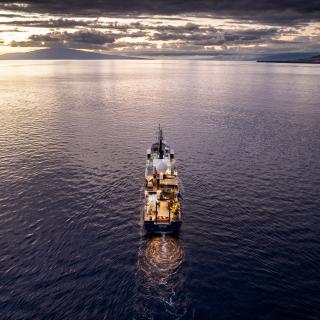
Mapping and Water Column Exploration Offshore Palau
Following two E/V Nautilus expeditions focused on exploring the deep sea in the Palau National Marine Sanctuary, this 17-day expedition will center on surveying the oceanography and current flow around the Palauan Islands, and how this affects both near and offshore ecosystems, including those within the Palau National Marine Sanctuary.
